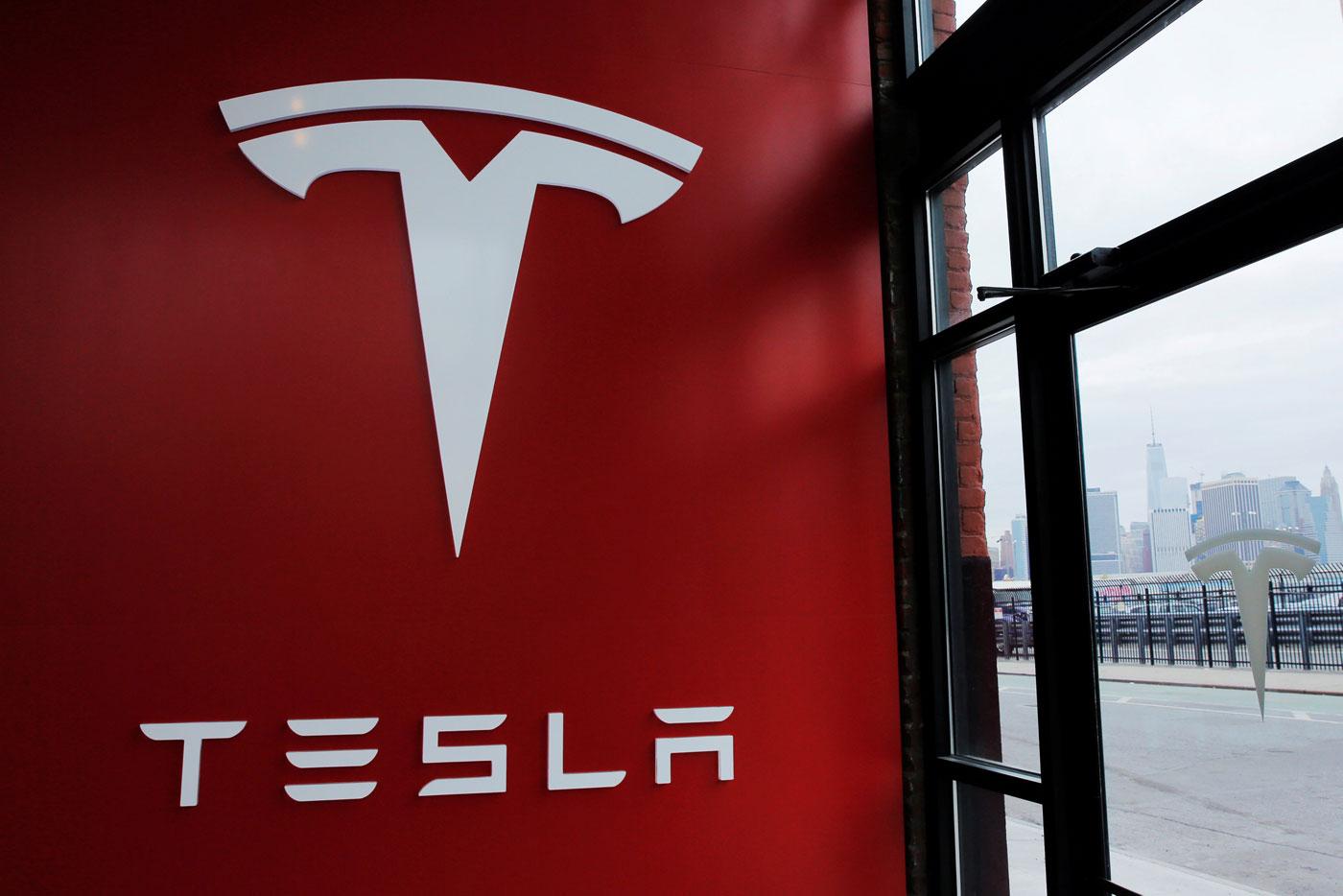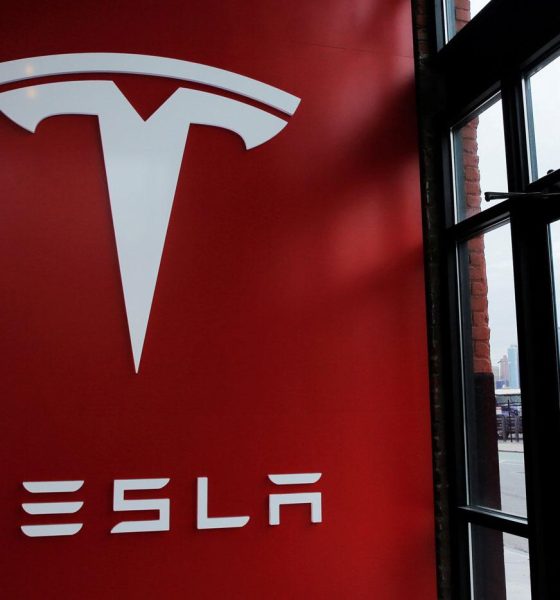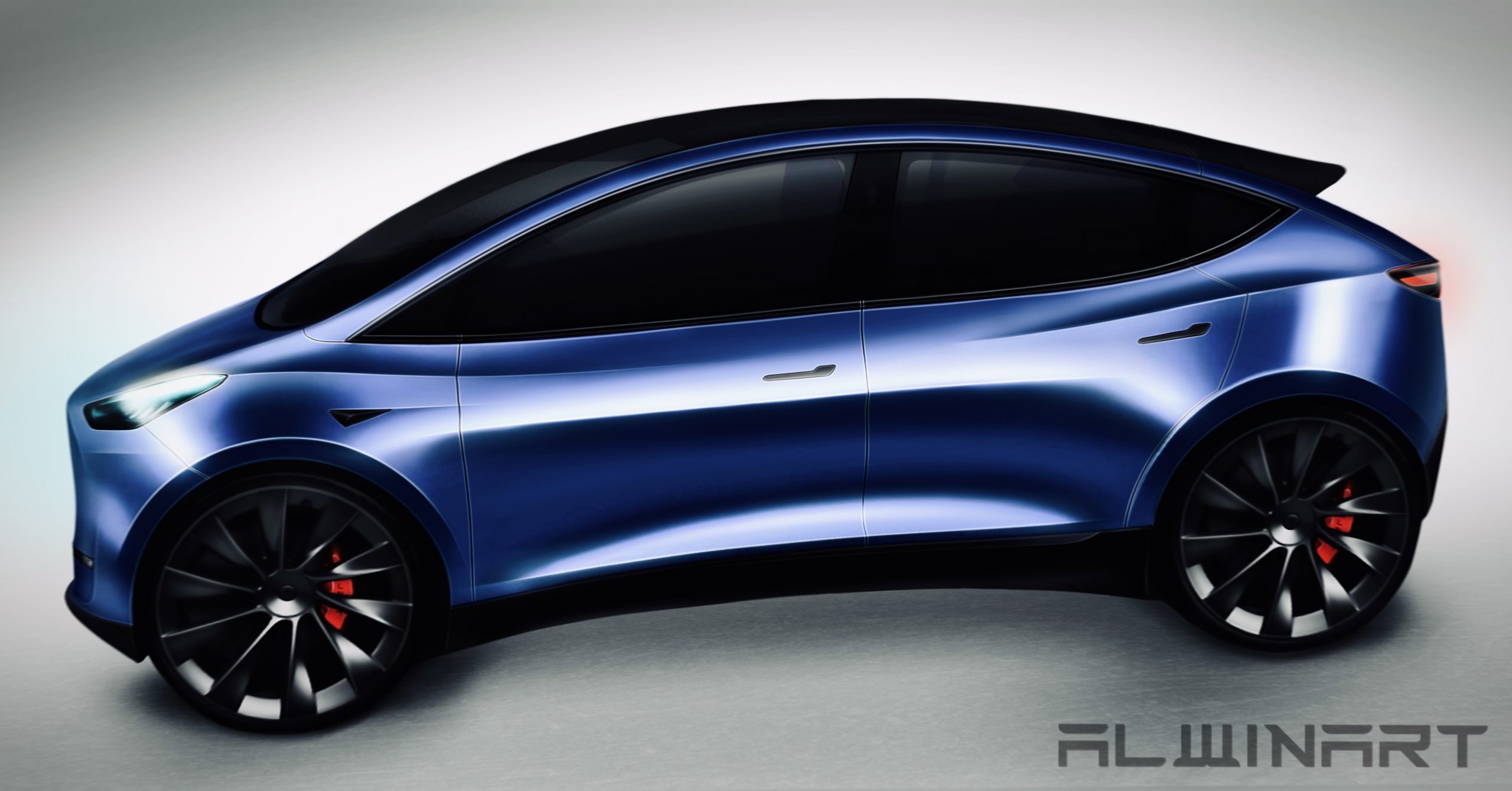

Investor's Corner
Tesla shares rebound over 9% from post-earnings pullback
Tesla (NASDAQ: TSLA) shares rebounded on Monday morning after collapsing late last week following a relatively bullish Earnings Call. The electric automaker’s shares were up over 9% by 1 PM EST.
Last Wednesday, Tesla reported its Earnings for 2021’s Full Year guidance and the year’s final quarter. Tesla reported delivery figures just after the New Year, beating consensus figures by 13 percent and delivering over 936,000 vehicles in 2021 while producing just over 930,000 units.
The Wednesday Earnings Call proved to be more bullish news for investors of Tesla. Musk and Co. reported another Earnings beat with $17.719B in revenues, an improving automotive gross margin, increased free cash flow, and an impressive $2.54 EPS. Wall Street expected $16.65B in revenues, with an EPS of $2.35. Despite the record-setting quarter, Tesla shares dropped sharply last week on Thursday and Friday, contributing to a significant slide in the tech sector as the market continued to experience a blunt selloff.
Shares were down 9.89 percent from Wednesday’s close to Friday’s close.
Tesla has not experienced positive days following Earnings Calls, even when profitability has become a regular expectation for the electric automaker’s quarterly calls. Past post-EC trading days have treated Tesla investors with the perfect inner struggle: Buy more or keep what I have?
Despite Tesla’s strong financials for Q4, it seemed the market responded to Musk’s quotations regarding Tesla’s future lineup. During the call, the CEO detailed that Tesla would not introduce any new vehicle models this year, putting an end to the speculation of a possible $25,000 Tesla or the arrival of the Cybertruck, which people have waited over two years to own.
“This lack of product is really weird,” John Murphy, a Bank of America analyst with a $1,300 price target on Tesla, said. We estimate it’s going to be 29 other EV models launched in the market. So the market is coming for him, and when we look at market share going forward, he’s going to lose a lot of market share. We can get into specific numbers, but we expect he is going to lose about 50 points of market share in the EV market over the next three to four years,” he said on CNBC.
Tesla CEO Elon Musk said the $25,000 Tesla wouldn’t be coming this year. (Credit: Alwinart/Twitter)
While other companies do, in fact, have new products coming to the market, the expectation is that consumers will go to whatever car is most desirable. From Tesla’s perspective, their multiple-year lead in software, EV infrastructure, batteries, and manufacturing, may give them peace of mind in knowing that there will be no more new car models this year. Why continue to expand the lineup when the current one is selling, and selling a lot. The Model 3 was Europe’s best-selling EV, and Tesla sold more EVs globally in 2021 than any other company. They may be one of the few companies to have a fully-committed business model that only builds EVs and can do it in massive numbers, but people need cars now, and Teslas may be the most desirable EVs on the market. The question is, when are the other companies going to catch up and compete?
The lack of a “Product Roadmap” update may have culminated in some losses, but not the 10 percent drop-off in stock that is being canceled out this morning. Nevertheless, Tesla shares are on their way back up, along with many others in the auto industry, including Ford (NYSE: F), which gained nearly 4% at the time of writing, and Rivian (NASDAQ: RIVN) up almost 12%.
Disclosure: Joey Klender is a TSLA Shareholder. He does not own shares of Ford or Rivian, which were also mentioned in this article.
I’d love to hear from you! If you have any comments, concerns, or questions, please email me at joey@teslarati.com. You can also reach me on Twitter @KlenderJoey, or if you have news tips, you can email us at tips@teslarati.com.

Investor's Corner
Tesla stock closes at all-time high on heels of Robotaxi progress

Tesla stock (NASDAQ: TSLA) closed at an all-time high on Tuesday, jumping over 3 percent during the day and finishing at $489.88.
The price beats the previous record close, which was $479.86.
Shares have had a crazy year, dipping more than 40 percent from the start of the year. The stock then started to recover once again around late April, when its price started to climb back up from the low $200 level.
This week, Tesla started to climb toward its highest levels ever, as it was revealed on Sunday that the company was testing driverless Robotaxis in Austin. The spike in value pushed the company’s valuation to $1.63 trillion.
Tesla Robotaxi goes driverless as Musk confirms Safety Monitor removal testing
It is the seventh-most valuable company on the market currently, trailing Nvidia, Apple, Alphabet (Google), Microsoft, Amazon, and Meta.
Shares closed up $14.57 today, up over 3 percent.
The stock has gone through a lot this year, as previously mentioned. Shares tumbled in Q1 due to CEO Elon Musk’s involvement with the Department of Government Efficiency (DOGE), which pulled his attention away from his companies and left a major overhang on their valuations.
However, things started to rebound halfway through the year, and as the government started to phase out the $7,500 tax credit, demand spiked as consumers tried to take advantage of it.
Q3 deliveries were the highest in company history, and Tesla responded to the loss of the tax credit with the launch of the Model 3 and Model Y Standard.
Additionally, analysts have announced high expectations this week for the company on Wall Street as Robotaxi continues to be the focus. With autonomy within Tesla’s sights, things are moving in the direction of Robotaxi being a major catalyst for growth on the Street in the coming year.
Elon Musk
Tesla needs to come through on this one Robotaxi metric, analyst says
“We think the key focus from here will be how fast Tesla can scale driverless operations (including if Tesla’s approach to software/hardware allows it to scale significantly faster than competitors, as the company has argued), and on profitability.”

Tesla needs to come through on this one Robotaxi metric, Mark Delaney of Goldman Sachs says.
Tesla is in the process of rolling out its Robotaxi platform to areas outside of Austin and the California Bay Area. It has plans to launch in five additional cities, including Houston, Dallas, Miami, Las Vegas, and Phoenix.
However, the company’s expansion is not what the focus needs to be, according to Delaney. It’s the speed of deployment.
The analyst said:
“We think the key focus from here will be how fast Tesla can scale driverless operations (including if Tesla’s approach to software/hardware allows it to scale significantly faster than competitors, as the company has argued), and on profitability.”
Profitability will come as the Robotaxi fleet expands. Making that money will be dependent on when Tesla can initiate rides in more areas, giving more customers access to the program.
There are some additional things that the company needs to make happen ahead of the major Robotaxi expansion, one of those things is launching driverless rides in Austin, the first city in which it launched the program.
This week, Tesla started testing driverless Robotaxi rides in Austin, as two different Model Y units were spotted with no occupants, a huge step in the company’s plans for the ride-sharing platform.
Tesla Robotaxi goes driverless as Musk confirms Safety Monitor removal testing
CEO Elon Musk has been hoping to remove Safety Monitors from Robotaxis in Austin for several months, first mentioning the plan to have them out by the end of 2025 in September. He confirmed on Sunday that Tesla had officially removed vehicle occupants and started testing truly unsupervised rides.
Although Safety Monitors in Austin have been sitting in the passenger’s seat, they have still had the ability to override things in case of an emergency. After all, the ultimate goal was safety and avoiding any accidents or injuries.
Goldman Sachs reiterated its ‘Neutral’ rating and its $400 price target. Delaney said, “Tesla is making progress with its autonomous technology,” and recent developments make it evident that this is true.
Investor's Corner
Tesla gets bold Robotaxi prediction from Wall Street firm
Last week, Andrew Percoco took over Tesla analysis for Morgan Stanley from Adam Jonas, who covered the stock for years. Percoco seems to be less optimistic and bullish on Tesla shares, while still being fair and balanced in his analysis.

Tesla (NASDAQ: TSLA) received a bold Robotaxi prediction from Morgan Stanley, which anticipates a dramatic increase in the size of the company’s autonomous ride-hailing suite in the coming years.
Last week, Andrew Percoco took over Tesla analysis for Morgan Stanley from Adam Jonas, who covered the stock for years. Percoco seems to be less optimistic and bullish on Tesla shares, while still being fair and balanced in his analysis.
Percoco dug into the Robotaxi fleet and its expansion in the coming years in his latest note, released on Tuesday. The firm expects Tesla to increase the Robotaxi fleet size to 1,000 vehicles in 2026. However, that’s small-scale compared to what they expect from Tesla in a decade.
Tesla expands Robotaxi app access once again, this time on a global scale
By 2035, Morgan Stanley believes there will be one million Robotaxis on the road across multiple cities, a major jump and a considerable fleet size. We assume this means the fleet of vehicles Tesla will operate internally, and not including passenger-owned vehicles that could be added through software updates.
He also listed three specific catalysts that investors should pay attention to, as these will represent the company being on track to achieve its Robotaxi dreams:
- Opening Robotaxi to the public without a Safety Monitor. Timing is unclear, but it appears that Tesla is getting closer by the day.
- Improvement in safety metrics without the Safety Monitor. Tesla’s ability to improve its safety metrics as it scales miles driven without the Safety Monitor is imperative as it looks to scale in new states and cities in 2026.
- Cybercab start of production, targeted for April 2026. Tesla’s Cybercab is a purpose-built vehicle (no steering wheel or pedals, only two seats) that is expected to be produced through its state-of-the-art unboxed manufacturing process, offering further cost reductions and thus accelerating adoption over time.
Robotaxi stands to be one of Tesla’s most significant revenue contributors, especially as the company plans to continue expanding its ride-hailing service across the world in the coming years.
Its current deployment strategy is controlled and conservative to avoid any drastic and potentially program-ruining incidents.
So far, the program, which is active in Austin and the California Bay Area, has been widely successful.








